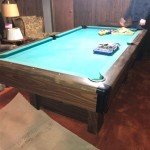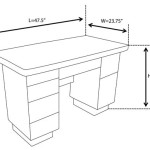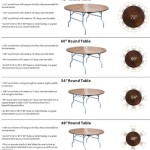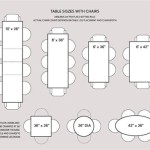Reclaimed Wood Circle Dining Table: A Sustainable and Stylish Centerpiece
The reclaimed wood circle dining table is gaining popularity as a desirable choice for homeowners and interior designers alike. Its eco-friendly nature, unique character, and versatility in design make it a compelling alternative to mass-produced furniture. This article explores the various aspects of reclaimed wood circle dining tables, examining their environmental benefits, aesthetic appeal, considerations for selection, and maintenance best practices.
Reclaimed wood, as the name suggests, is lumber that has been salvaged from old structures, such as barns, factories, and demolished buildings. Instead of being discarded as waste, this wood is repurposed and transformed into valuable furniture pieces. The process inherently reduces the demand for newly harvested timber, conserving forests and mitigating the negative environmental impacts associated with logging.
A circle dining table, in contrast to rectangular or square tables, fosters a more inclusive and intimate dining experience. The circular shape eliminates the concept of a "head" of the table, promoting equal participation and visual connection among diners. When combined with the rustic charm of reclaimed wood, the resulting piece becomes a focal point that blends sustainability with social interaction.
Environmental Benefits of Reclaimed Wood
The environmental advantages of utilizing reclaimed wood are significant. Firstly, it reduces deforestation. The timber industry, when not managed sustainably, can lead to habitat destruction, soil erosion, and biodiversity loss. By choosing reclaimed wood, consumers actively participate in reducing the pressure on virgin forests. The process of extracting and transporting new lumber requires substantial energy consumption. Reclaimed wood, on the other hand, involves minimal processing. It typically requires cleaning, sanding, and refinishing, which consumes far less energy than felling trees, milling lumber, and transporting it to manufacturing facilities.
Furthermore, utilizing reclaimed wood helps to divert waste from landfills. Demolished buildings and structures often contribute significantly to construction and demolition debris. By salvaging wood from these sources, we reduce the volume of waste going to landfills, thereby minimizing the environmental pollution associated with waste disposal. The use of reclaimed materials can contribute to earning points towards LEED (Leadership in Energy and Environmental Design) certification for buildings, recognizing commitment to sustainable building practices.
The carbon footprint associated with reclaimed wood is significantly lower compared to newly harvested timber. Trees absorb carbon dioxide from the atmosphere during their lifespan. When trees are harvested and processed into lumber, some of this stored carbon is released. However, by using reclaimed wood, the carbon remains locked within the material, effectively sequestering it. This reduces the overall carbon footprint of the furniture manufacturing process.
Aesthetic Appeal and Design Versatility
Reclaimed wood possesses a unique character that is difficult to replicate with new lumber. Years of exposure to the elements, combined with the history of its previous life, create distinctive patterns, textures, and color variations. Nail holes, saw marks, and other imperfections are often retained, adding to the rustic charm and visual interest of the wood. This inherent uniqueness makes each reclaimed wood circle dining table a one-of-a-kind piece.
The design versatility of reclaimed wood circle dining tables is another significant advantage. They can be incorporated into various interior design styles, from rustic and farmhouse to industrial and modern. The wood can be finished in a variety of ways to complement different aesthetics. A clear coat finish can highlight the natural grain and imperfections of the wood, while a darker stain can create a more sophisticated and elegant look. The table base can also be customized to suit different preferences. Options include metal legs, wooden pedestals, or even repurposed industrial components, allowing for further personalization.
The circular shape of the table further enhances its visual appeal. It creates a sense of symmetry and balance in the dining area, offering a softer and more inviting alternative to angular tables. The absence of sharp corners also makes it a safer option, especially in households with young children. In open-plan living spaces, a circle dining table can serve as a natural focal point, visually connecting different areas of the home.
Beyond the aesthetics, the reclaimed wood itself offers a tactile quality often absent in mass-produced furniture. Running your hand across the weathered surface provides a connection to the past and an appreciation for the natural material. This sensory experience enhances the overall dining experience, making it more engaging and memorable.
Considerations for Selecting a Reclaimed Wood Circle Dining Table
When selecting a reclaimed wood circle dining table, several factors should be taken into consideration. The size of the table should be proportionate to the dining area and the number of people who will typically use it. A smaller table may suffice for a compact apartment, while a larger table is more suitable for a spacious dining room. Consider the diameter of the table in relation to the available space, allowing sufficient room for chairs and movement around the table.
The type of wood used in the table is also an important consideration. Different types of reclaimed wood have varying characteristics in terms of grain, color, and hardness. For example, reclaimed oak is known for its strength and durability, while reclaimed pine offers a softer and more rustic aesthetic. Inspect the wood carefully for any signs of damage, such as excessive warping, splitting, or insect infestation. While minor imperfections are part of the charm of reclaimed wood, significant damage may compromise the structural integrity of the table.
The finish of the table is another crucial aspect to evaluate. The finish should protect the wood from moisture, stains, and scratches. Choose a finish that is appropriate for the intended use and the level of maintenance desired. Options include oil-based finishes, water-based finishes, and wax finishes. Consider the VOC (volatile organic compound) content of the finish, opting for low-VOC or no-VOC options to minimize environmental impact and indoor air pollution.
The table base should be sturdy and well-constructed to ensure stability. Check the joints and connections to ensure that they are secure and properly fastened. The height of the base should also be appropriate for comfortable dining. Consider the style of the base in relation to the overall aesthetic of the table and the surrounding decor. Metal legs can offer a modern and industrial look, while wooden pedestals can create a more traditional and farmhouse feel.
Finally, consider the source and reputation of the manufacturer or supplier. Choose a reputable company that is committed to sustainable practices and ethical sourcing of reclaimed wood. Ask about the origin of the wood and the processes used to reclaim and refinish it. Look for certifications, such as FSC (Forest Stewardship Council) certification, which indicate that the wood has been sourced responsibly.
By carefully considering these factors, consumers can select a reclaimed wood circle dining table that is both stylish and sustainable, adding a unique and environmentally friendly centerpiece to their home.

Reclaimed Wood Pedestal Dining Table 54 West Elm

Round Farmhouse Table Dining In Reclaimed Wood And Steel Круглые кухонные столы обеденные Современные столики

Reclaimed Wood Round Table The Stockwood Robert Rose Carpentry

Round Dining Table Reclaimed Wood Industrial Hairpin Legs 7magok Furniture Rustic Kitchen Tables Room

Hart Round Reclaimed Wood Extending Dining Table Pottery Barn

Round Table Kitchen Reclaimed Wood

Imani French Country Brown Reclaimed Wood Round Dining Table 55 W 51 60 Kathy Kuo Home

Reclaimed Wood Extending Dining Table Limited Abode

Hampton Round Reclaimed Wood Dining Table Rustic Red Door

Round Reclaimed Wood Dining Table With French X Back Chairs And White Slipper C Beach House Room Hamptons








